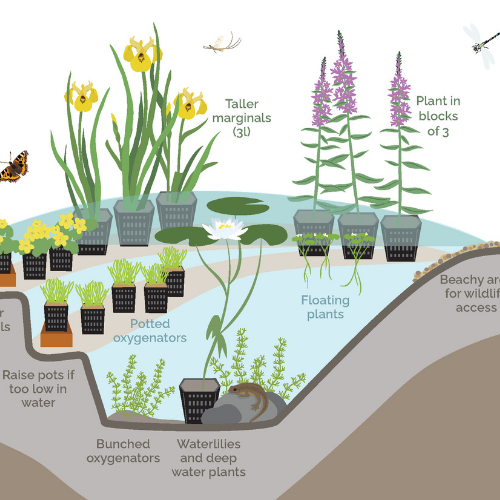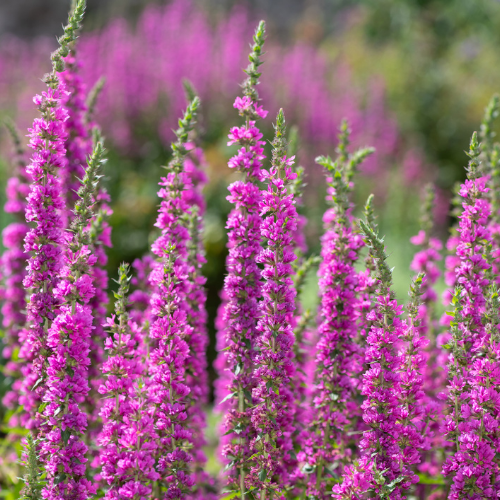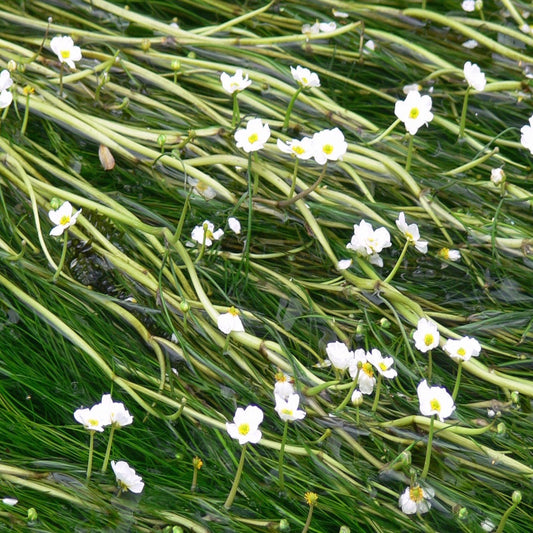
How to Measure Your Pond
Before you start planting, it’s helpful to have a rough idea of your pond’s size but don’t worry, it doesn’t need to be exact! Whether you’ve got a small pond, a natural wildlife pond, or a formal garden pond, this guide will help you work out your pond area easily.
Some pond shapes are trickier to measure than others, especially informal or wildlife-style ponds, so we’ve kept things as simple as possible. Just take a few basic measurements, use our tips below, and you’ll have a good working estimate to plan your planting.
Once you’ve got your number, the fun begins, choosing the best plants for your pond! From floating plants and waterlilies to oxygenators and marginals, knowing your pond’s size helps you build a thriving, well-balanced space for plants, wildlife, and crystal-clear water.
Scroll down for diagrams showing how to measure different types of ponds. Then, head to our Pond Plant Planner to get tailored plant suggestions for your pond.
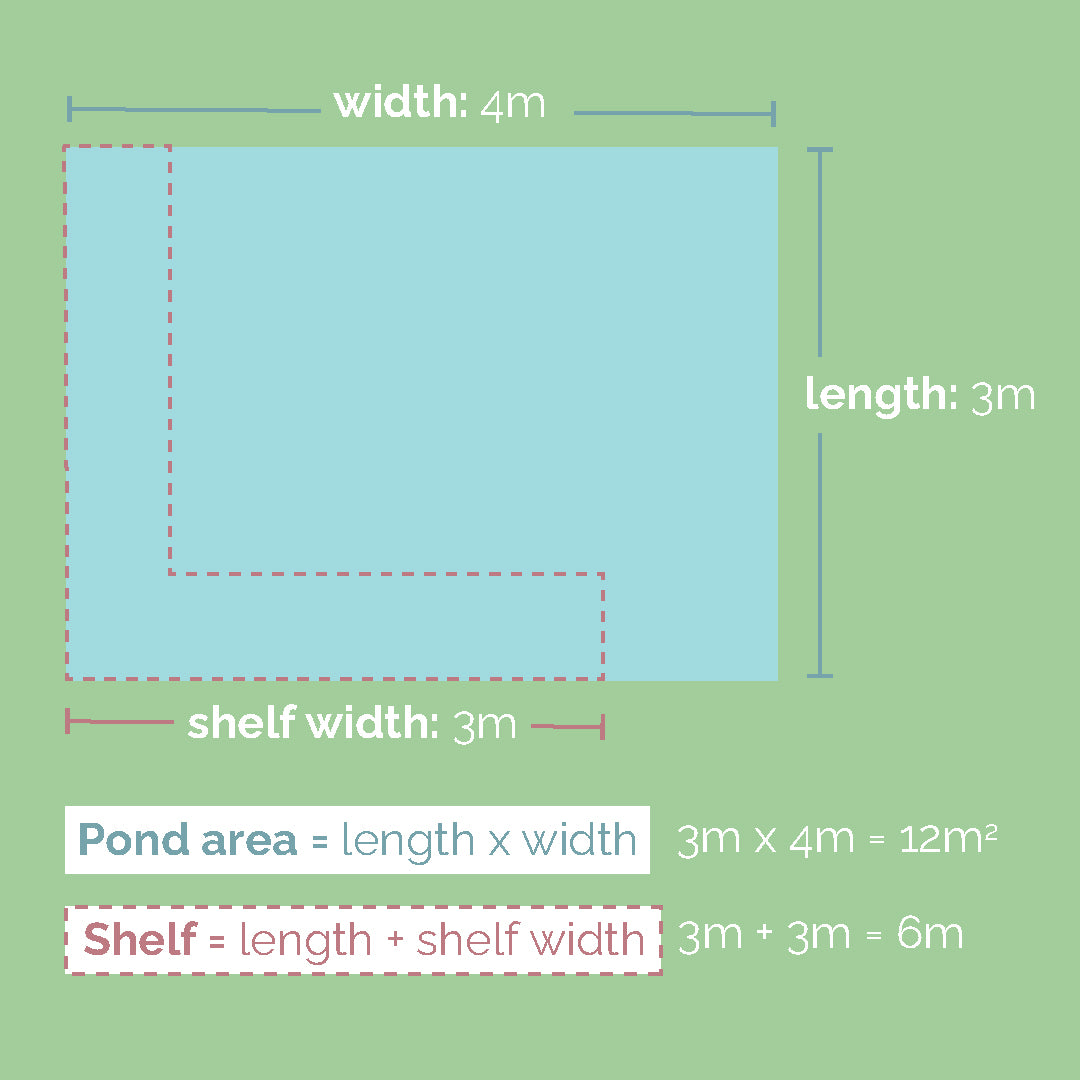
Rectangular Pond
Measure your pond’s length and width for surface area.
For marginals, measure shelf length and depths.
Sketching a simple diagram helps with planning.
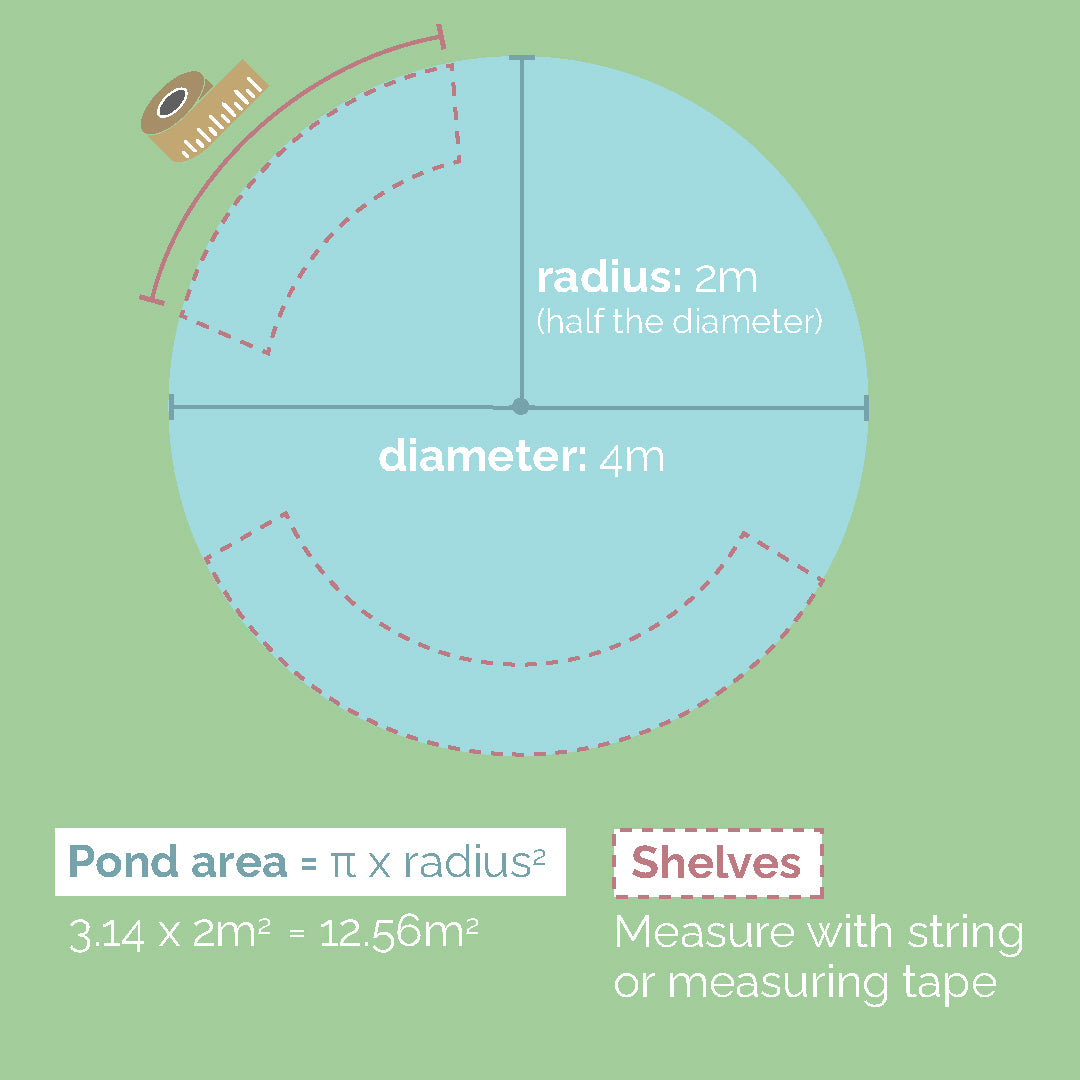
Circular Pond
Measure your pond’s diameter, divide by two for the radius and use the formula in the diagram for surface area.
For marginals, measure shelf length and depths.
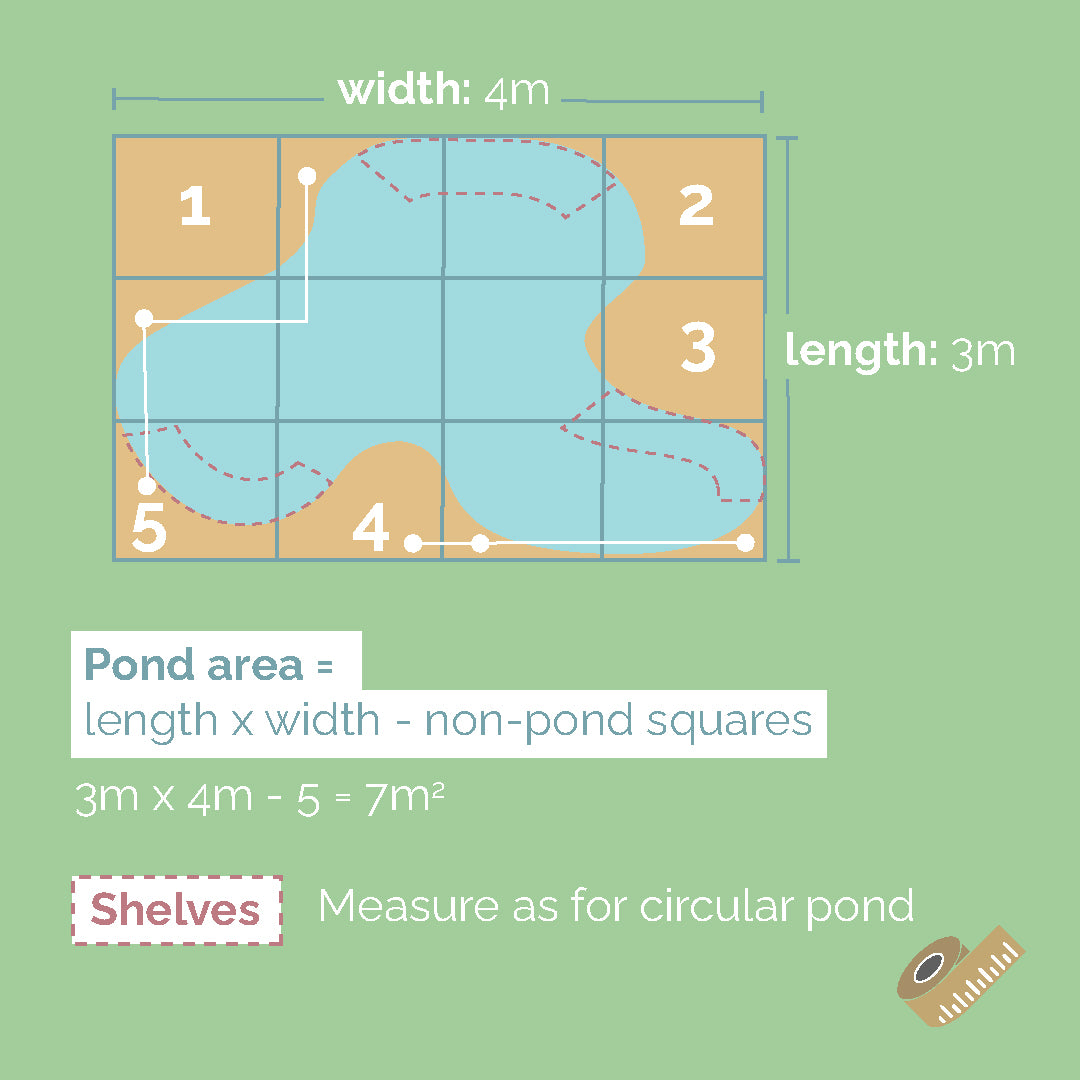
Irregular Shaped Pond
Measure the widest and longest parts of the pond.
Draw a grid of 1m squares.
Count the approx. number of squares with no pond in them.
Bestselling Pond Plants
-
Hornwort | Ceratophyllum demersum
Regular price £15.50Regular priceUnit price / per -
Frogbit | Hydrocharis morsus ranae
Regular price £15.50Regular priceUnit price / per -
Water Crowfoot | Ranunculus aquatilis
Regular price £15.50Regular priceUnit price / per -
Water Hawthorn | Aponogeton distachyos
Regular price From £18.00Regular priceUnit price / per


